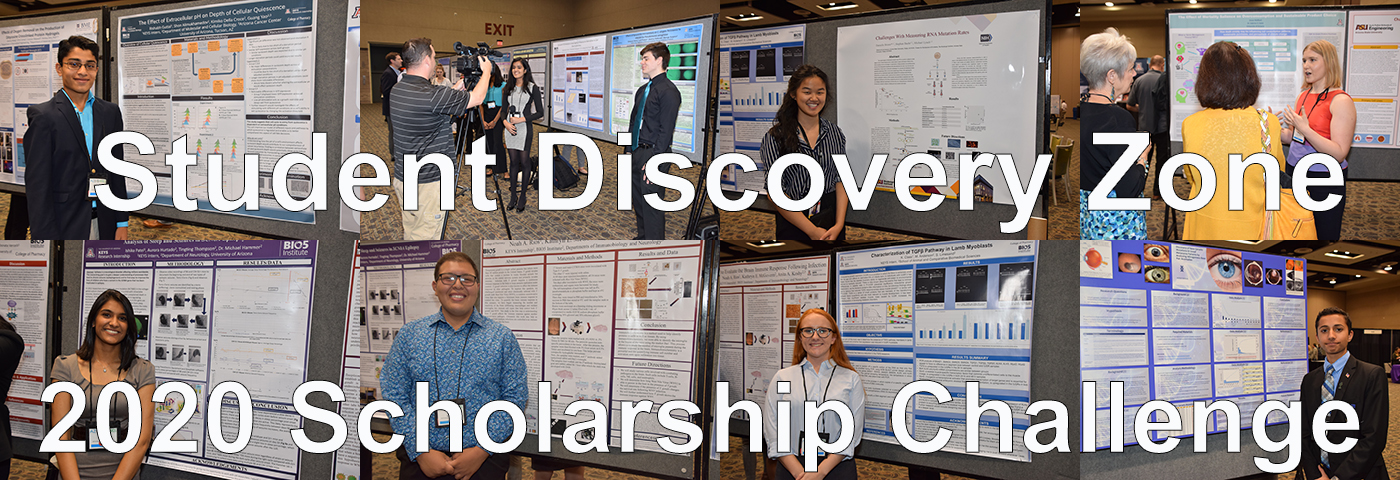
Arizona Bioscience Week Student Discovery Zone Goes Virtual!
Since it began in 2011, the Student Discovery Zone at the AZBio Awards has showcased the work of over 900 Arizona students. In 2020, we have developed a unique video based challenge format so that we can continue the tradition in the safest way possible.
New for 2020!
Student Discovery Zone Challenge Scholarship Prizes:
High School Students: First Place ($1,000), Second Place ($500), Third Place ($250)
University Students: First Place ($1,000), Second Place ($500), Third Place ($250)
IN THE CASE OF A TIE WITHIN A CATEGORY, SCHOLARSHIPS WILL BE SHARED PROPORTIONALLY BY STUDENT WINNERS.
Help Our Students Win a Scholarship
Scroll down to watch and vote for your favorite videos. (Voting is open Sept. 13 - 19, 2020)
How to submit a student entry.
- All entrants MUST complete the application above to be eligible for scholarship prizes.
- Once you have applied, you may submit your video.
- If your 2-minute video is already on YouTube or Vimeo, you can submit it using your video link in the form below.
- ALL SELF-SUBMITTED VIDEOS WILL BE REVIEWED AND APPROVED BY AZBIO PRIOR TO APPEARING ON THE COMPETITION PAGE.
- If your video is NOT on YouTube or Vimeo, contact AZBio at 480-779-8101 or advancingbio@azbio.org and we will provide you with a link so you can upload your video to our server for this contest.
STUDENTS: BY PROVIDING YOUR VIDEO, YOU ARE CONFIRMING THAT AGREE TO THE CONTEST TERMS AND CONDITIONS.
Student Discovery Zone 2020 Scholarship Challenge
Student Contestants
Navigation Tips:
- Toggle Buttons to the far right on the blue bar will allow you to toggle between the List and Grid view.
- To learn more about a student protect, click on the Student Name associated with the video.
- Videos are displayed with the most recent videos at the top. Use the SORT drop down for other views.
[showcontestants id=1684 view=grid postperpage= -1]

